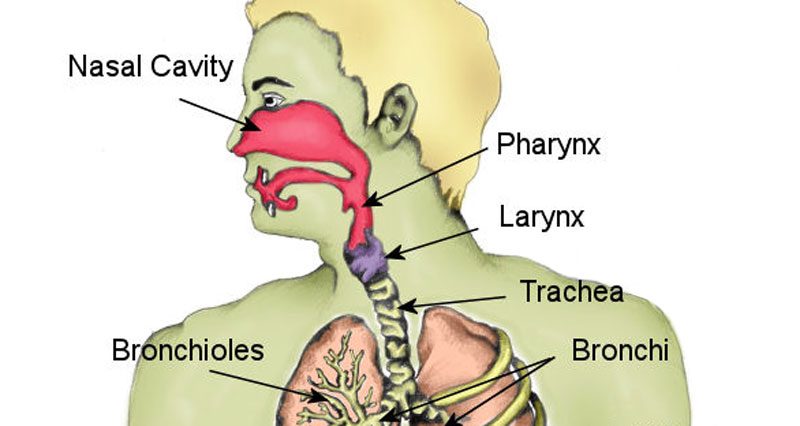A fractured larynx occurs when a direct impact causes a break in the voice box. This is a rare but potentially life-threatening injury.
Symptoms of a Fractured Larynx
Fractured larynx symptoms may include:
- Throat pain, particularly when swallowing.
- A hoarse or lost voice
- Shortness of breath
- Coughing up frothy blood.
- Swelling at the front of the throat
Causes
The larynx or voice box is located at the top of the trachea (or windpipe) at the front of the neck.
A fractured larynx occurs after a direct impact to the front of the neck. This is most frequent in road traffic accidents. Sometimes, ‘washing line’ tackles in Rugby cause latynx fractures. The opposing player stikes the injured player in the throat with their arm as they run past.
Laryngeal fractures can be classified into 4 groups:
- Group 1 includes minor injuries with only mild respiratory symptoms.
- Group 2 is moderate injuries with a degree of airway compromise and minor mucosal disruption.
- Groups 3 & 4 are the most serious injuries with severe airway compromise, massive swelling, cartilage exposure, mucosal tears, and vocal cord immobility. The difference between groups 3 & 4 is in treatment.
- Group 4 injuries require a stent.
Treatment
If you suspect a laryngeal fracture seek medical attention as soon as possible. Call the emergency services immediately if you have difficulty breathing.
X-rays are important to rule out fractures of the cervical vertebrae. A CT scan usually confirms the diagnosis of a ‘fractured larynx’.
Class 1 injuries
Treat with observation, bed rest with the head elevated and humified air. Voice rest and nil-by-mouth may also be advised in the short term.
Class 2 injuries
Teat class 2 with a Tracheostomy to allow breathing if it affects your airways. are affected and direct laryngoscopy (camera inserted down the throat to view the larynx).
Class 3 injuries
These are treated with the above, plus surgical repair.
Class 4
These are the same as class 3, with the addition of a stent (a tube that keeps the larynx and trachea open)
